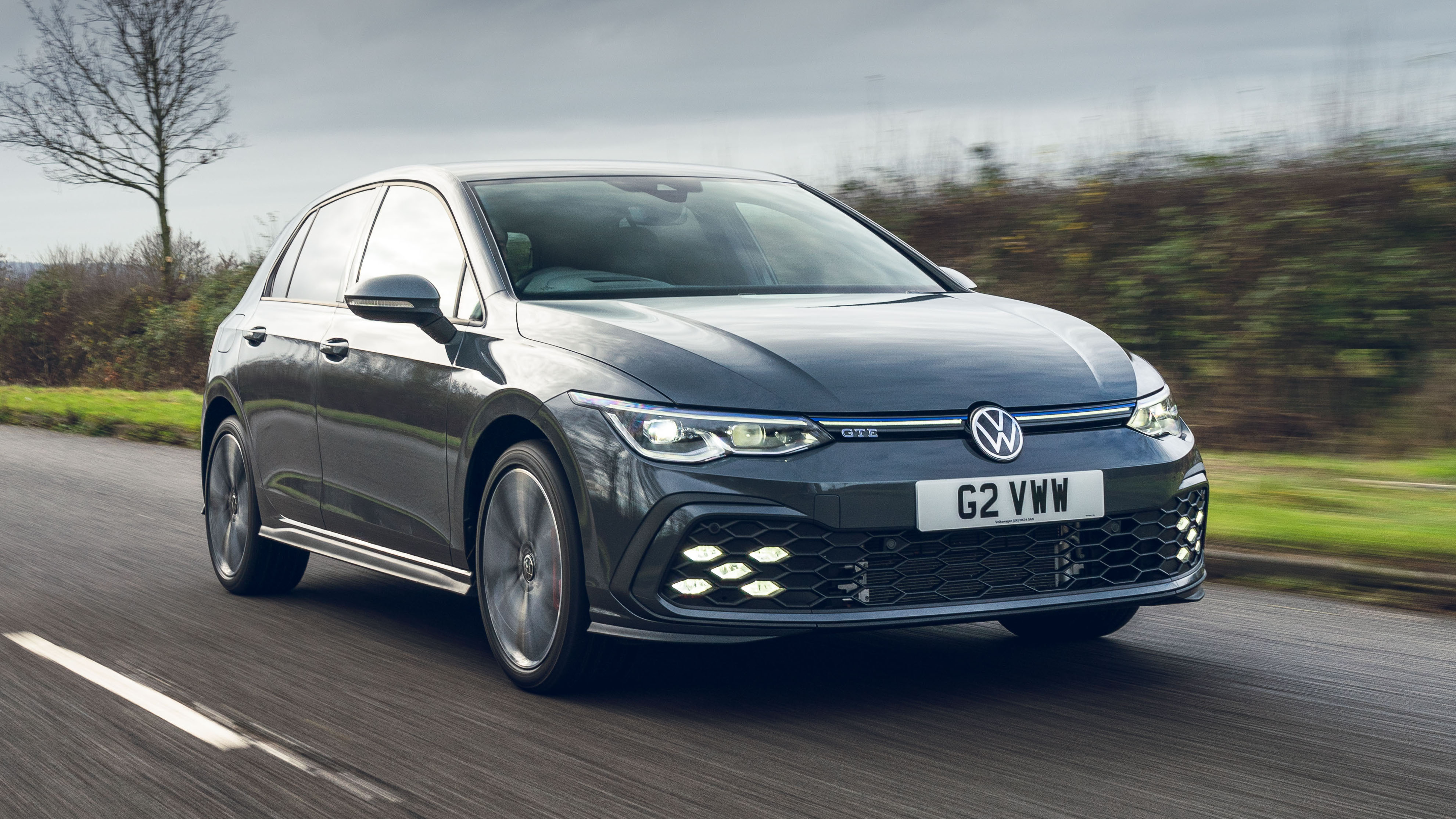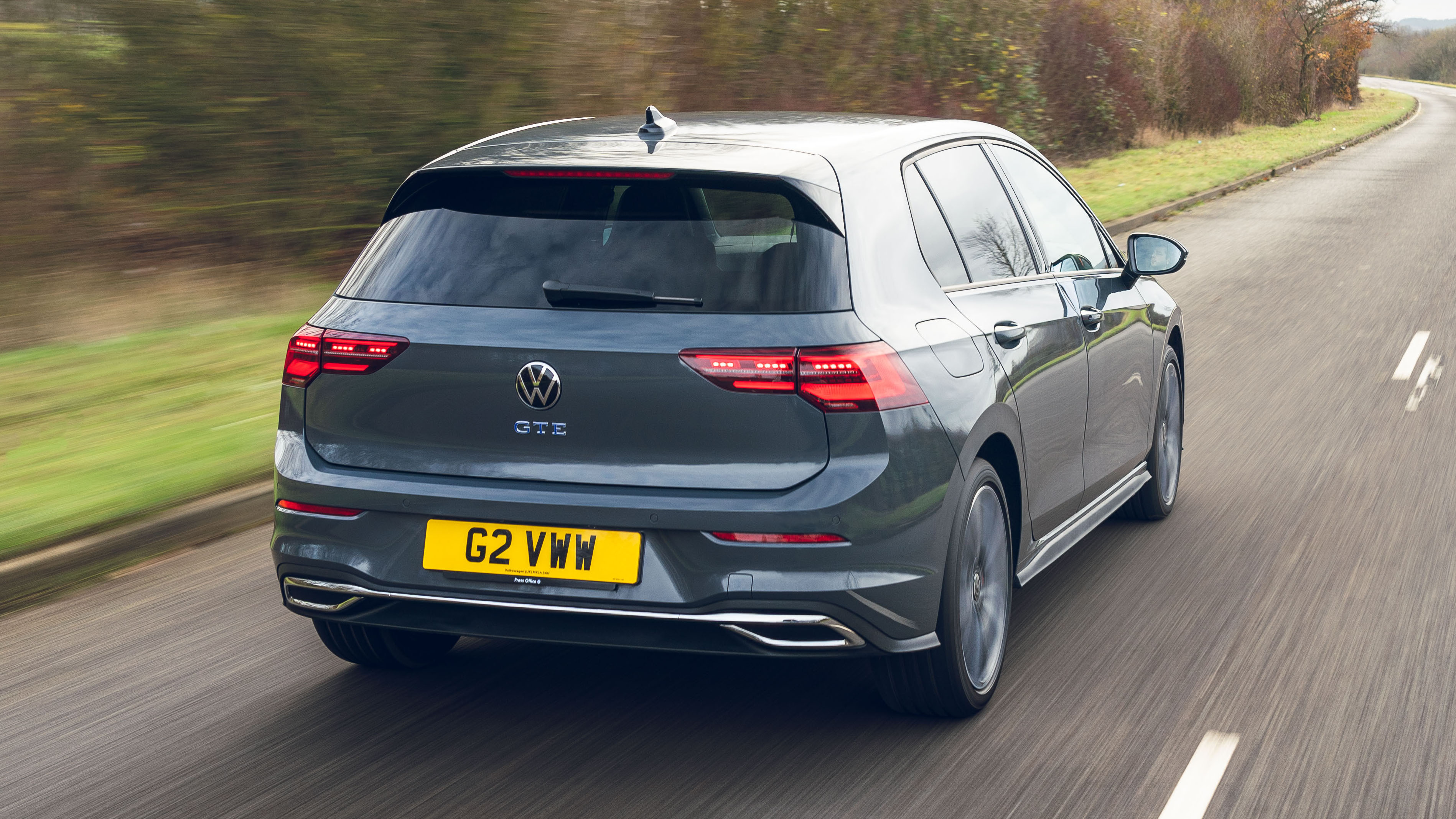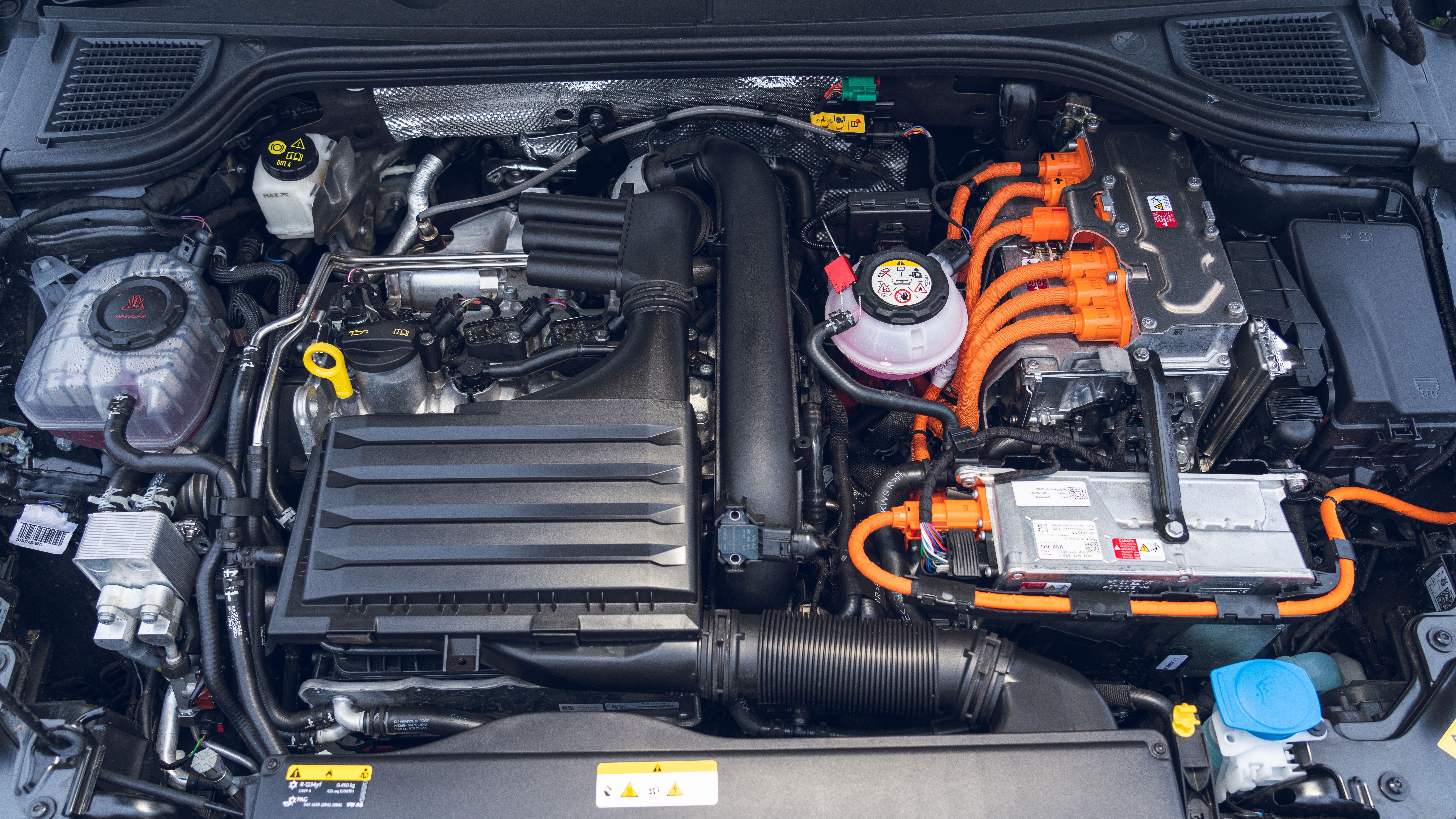
Good stuff
A company car bargain with GTI levels of power
Bad stuff
You only have that power for 30 miles. Use it wisely
Overview
What is it?
This is the second version of the Volkswagen Golf GTE – it was first launched in 2014 as a 201bhp, sportier alternative to the fully electric e-Golf, intended as a sort of have-your-cake-and-eat-it plug-in hybrid that might appeal to company car buyers.
That original GTE was part of the MkVII Golf range, and now the MkVIII has been with us for a few years, an updated version of the GTE has joined the fray. With this car Volkswagen has upped the ante on the sporty rhetoric. As well as an increase in power to 242bhp, the GTE is being marketed alongside the GTI as a full-on hot hatch with a conscience.
Does the GTE work as a hot hatch?
The first sense you get from the plug-in Golf is that it can’t quite decide whether it’s going to fully commit to being either sporty or economical. You’d have to imagine that if the plug-in hybrid powertrain was a genuine contender then Volkswagen would have just gone all-in and sold the GTI with a plug, as much as that would have upset the purists.
It certainly doesn’t drive as well as a GTI – the engine set-up isn’t as fun, and you can feel the extra weight through corners. It’s just not a car that’s as willing to have fun – it’s a capable cruiser, certainly, but not a car you’d want to take the long way round for the fun of it.
What’s the powertrain like?
The GTE features a 1.4-litre turbocharged four-cylinder engine that pumps out 148bhp and 184lb ft of torque. That’s connected to a six-speed DSG gearbox and a 109bhp electric motor. When both combine their powers you end up with a peak of 242bhp and 295lb ft of torque. But you’re also aware that when the battery runs out you’re left with a wheezy 148bhp motor that’s having to shift a chunk of extra batteries.
Only the front wheels are driven, and the battery is a 13kWh unit (compared with the old version’s 8.7kWh offering). Official WLTP range from the battery is a sniff under 40 miles, which of course you won’t be able to match – perhaps somewhere around 30 miles of e-range is a touch more realistic. The important figure for company car buyers is the 25g/km CO2 rating, which is what makes the GTE a compelling prospect, with a BIK rate of seven per cent.
What’s the Golf GTE like inside?
The GTE-spec Golf is placed as a step up from the R-Line car, so you get a decent level of kit onboard, which starts with a distinctive tartan trim on the seating, a sporty heated leather steering wheel (albeit with the heinous touch sensitive controls on it that we hated in the GTI), three-zone climate control, heated front seats and fancy LED ambient lighting.
Unfortunately you also get the 10in touchscreen set-up with touch sensitive ‘buttons’ underneath that we hated in every Volkswagen we’ve driven with it in. If you can stomach it, great, but we’d definitely recommend a test drive before you commit to a Golf.
Bootspace is compromised by the hybrid batteries (see the Buying section), but overall the Golf remains a practical everyday hatch. There’s decent space for four and occasional room for five.
Our choice from the range

What's the verdict?
As always, whether a plug-in hybrid works for you depends on whether you’re able to regularly charge and how many round trips of more than 30 miles you tend to make. If the answer to the former is ‘often’ and the latter ‘barely ever’ then the GTE would clearly make more financial sense than a GTI or something of a similar breed.
The onboard tech and turn of pace from the 242bhp powertrain will make GTE attractive to company buyers, as long as you don’t go in expecting a riotous hot hatch. The problem is that Volkswagen is selling the GTE as a performance option, and in that company, it doesn’t provide anything like the required thrills.
The Rivals
Trending this week
- Car Review
BMW iX3








